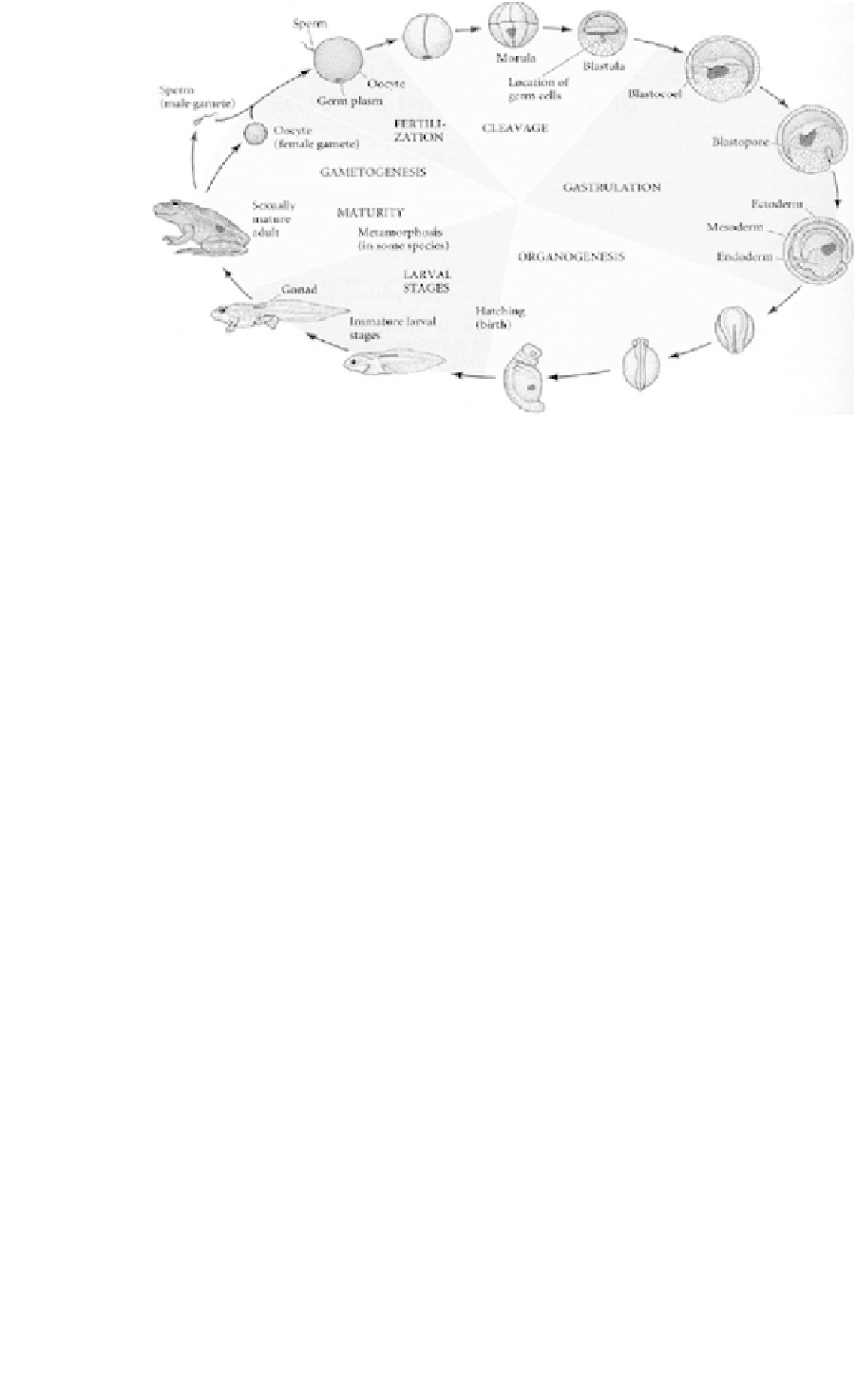Biomedical Engineering Reference
In-Depth Information
Figure 8.2-2 Stages of stem cell development in a frog. Note the continuity of germplasm.
Adapted from: The President's Council for Bioethics, 2004, Monitoring Stem Cell Research, Appendix A, Washington, DC.
(i.e., multipotent) cells have been isolated from a variety
of tissues. These stem cell populations can be differen-
tiated
in vitro
into various cell types, and are currently
being extensively and intensively investigated for po-
tential applications in regenerative medicine. Many sci-
entists believe that embryonic and adult stem cells can
lead to treatments for many human maladies. However,
much of this is conjecture at this point.
The Chairman of the President's Council on Bioethics
succinctly characterized the raging stem cell debate in
a letter to the President:
the value of the individual, fertilized ova, destroying and
discarding many in the process.
In a recent undergraduate seminar at Duke, students
shared why IVF seems to ''get a pass'' morally, at least in
comparison to the scrutiny given to stem cell and cloning
research, even though all these are beginning of life
(BOL) issues. One student pointed out that IVF is not
new. Others noted that the technologies are more
mainstream and understandable by the public. One stu-
dent suggested the fact that many people know people
who were conceived via IVF, so the mystique is gone. In
the course of the discussion, it became obvious that most
of the students do not even think about the morality of
IVF. It simply exists as an alternative means of re-
production. And, the IVF industry is considered rather
positively. The discarded embryos are just considered by
many to be a byproduct of the process that allows people
who could not ordinarily do so to have children. Thus,
few seem to question the morality of IVF, so the
discarding of embryos is not often seen as an immoral
act of the fertility clinics. Further, those who oppose the
use of embryos that would otherwise be destroyed are
seen as ''wasteful'' and ''myopic,'' or even as Luddites
who stand in the way of progress and betterment of
humankind.
As the President's Council on Bioethics puts it: ''All
extractions of stem cells from human embryos, cloned or
not, involve the destruction of these embryos.''
10
A rather
common paradox is that research may either exacerbate
or ameliorate ethical issues. For example, if emerging re-
search supports the contention that embryonic stem cells
are essential to provide the treatment and cures of in-
tractable diseases, many scientists and ethicists will push
the ''greater good,'' utilitarian viewpoint, while others will
While they may well in the future prove to be of
considerable scientific and therapeutic value, new
human embryonic stem cell lines cannot at present be
obtained without destroying human embryos. As
a consequence, the worthy goals of increasing scientific
knowledge and developing therapies for grave human
illnesses come into conflict with the strongly held belief
of many Americans that human life, from its earliest
stages, deserves our protection and respect.
9
The diametric opposition lies between those who see
embryos as living human beings entitled to protection and
those who consider them merely as ''potential'' humans
that may be used as researchers see fit in an effort to
advance the state of knowledge. This use includes the
destruction (killing) of embryos to harvest stem cells.
One of the major ethical issues of stem cell research
revolves around the first stage, especially the means of
harvesting the embryonic stem cells by IVF. In particular,
the argument contends that since fertilization has oc-
curred, we are actually conducting research on a living
human being. And, the IVF process itself is cavalier about




